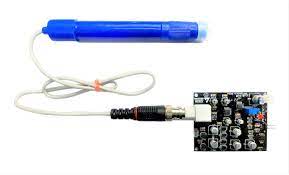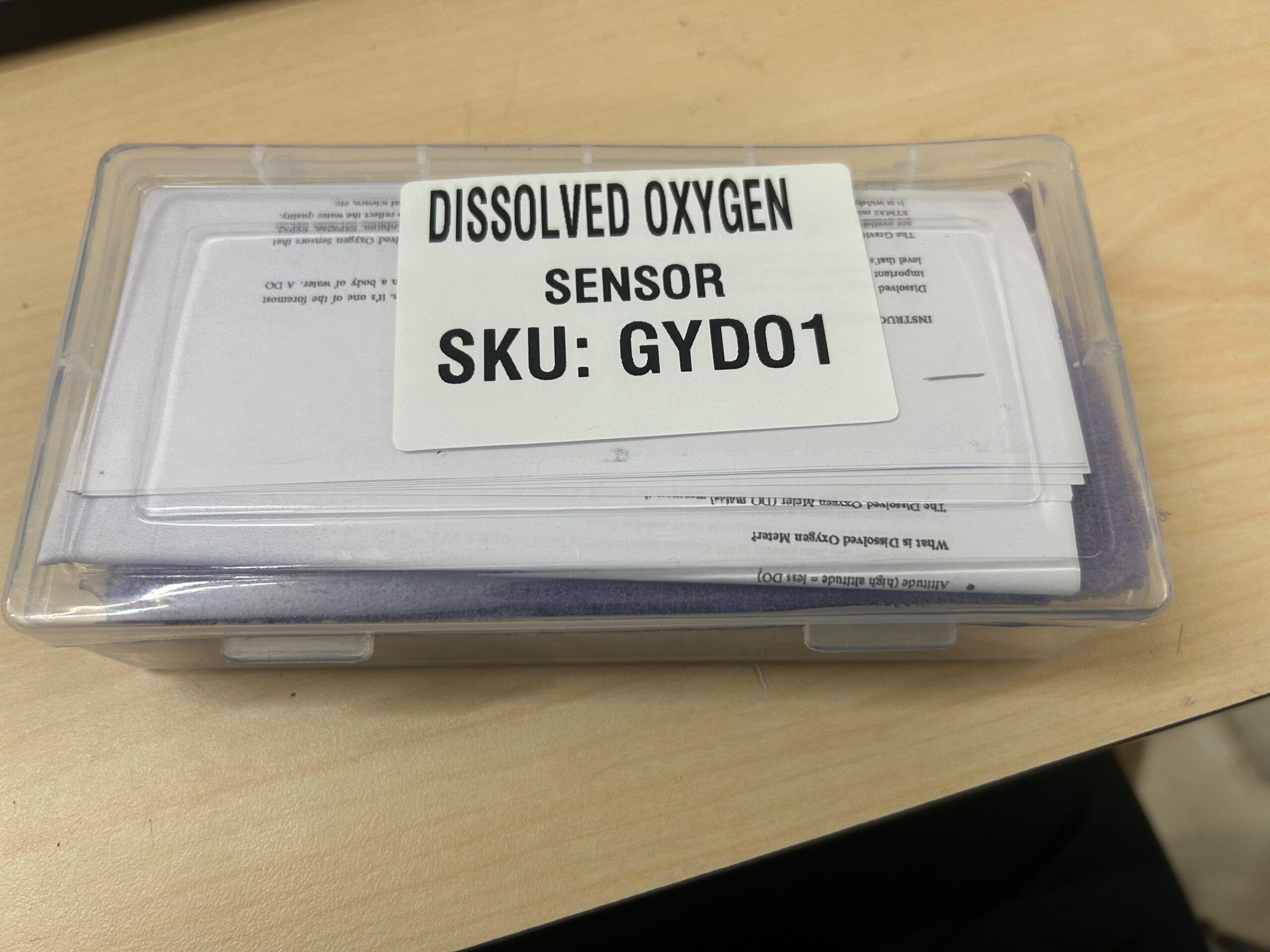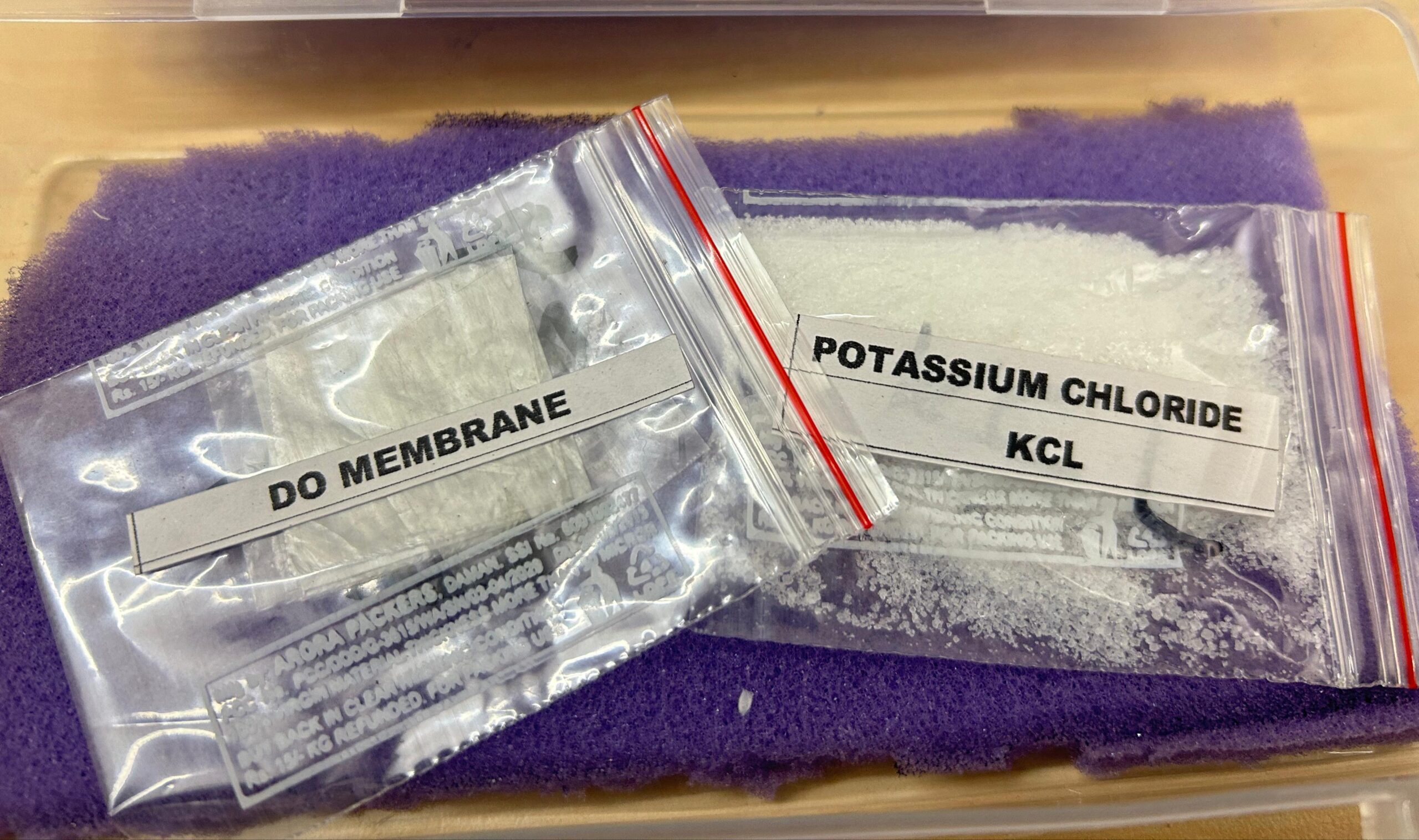DISSOLVE OXYGEN SENSOR WITH PH BOARD
Preparing the Dissolved Oxygen Level Sensor Probe:
For a new dissolved oxygen probe, first thing to remember begin by adding 7.5% KCL solution into the membrane cap as the filling solution. Follow these steps:
- Remove the membrane crown.
- Place the DO membrane on the cap and fix the crown to the electrolyte tube, covering one side of the membrane.
- Ensure the membrane has no wrinkles and is not punctured or damaged.
- Unscrew the membrane cap from the probe and fill about 2/3 volume of the cap with KCL solution.
- Keep the probe in a vertical position concerning the horizontal plane.
- Carefully screw the cap back onto the probe. Some solution overflow is acceptable to ensure the probe is fully filled with KCL solution, eliminating air bubbles.
- The 7.5% KCL solution acts as a suitable electrolyte in the DO Probe.
- The electrode tube should be free of air bubbles to prevent fluctuations in readings.
The Dissolved Oxygen Level Sensor for Arduino stands out as one of the market’s most popular and finest indeed Dissolved Oxygen Sensors. Compatible with Arduino, ESP8266, ESP32, STM32 microcontrollers, and Raspberry Pi, this Analog Dissolved Oxygen Level Sensor is widely utilized in various water quality applications such as aquaculture, environment monitoring, and natural science, among others. In a word it serves the purpose of measuring dissolved oxygen in water to reflect water quality.
Calculating Dissolved Oxygen Levels:
Expressed in milligrams per liter (mg/L) or parts per million (ppm), given that dissolved oxygen concentration levels are interchangeable, with 1 mg/L equaling 1 ppm. The Dissolved Oxygen Level Sensor kit includes a signal converter board with a BNC connector, especially directly connectable to the Galvanic Probe. This signal converter board amplifies the minor voltage difference eventually to a readable signal detectable by Arduino. With plug-and-play functionality, coupled with the signal converter board ensures good compatibility.
To protect the sensitive and fragile oxygen-permeable membrane in the membrane cap, for that reason it is crucial to cover the sensor tip. Ensure that Fingernails and other sharp objects likewise are avoided to prevent damage. This sensor can seamlessly integrate into any control or likewise detecting system.
| Range |
0 to 20.0 ppm |
|---|---|
| Resolution |
0.1 ppm |
| Accuracy |
+/- 0.2 ppm to +/- 1 count |
| Power |
9V BATTERY |
| Weight |
0.35 KG |
| Dimensions |
27 × 18 × 10 cm |






Reviews
Clear filtersThere are no reviews yet.